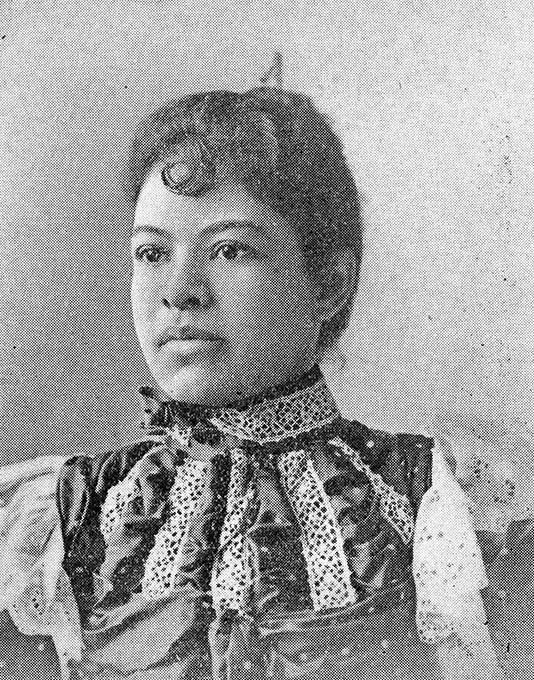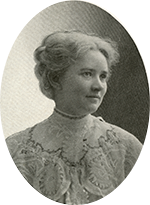Introduction
Women currently make up nearly half of all dental students and 25% of practicing dentists. Before the 1970s, fewer than 3.3% of American dentists were women. Independent-minded women struggled to obtain degrees, establish practices, and be respected as professionals.
Timeline
View an interactive timeline about the history of women dentists
Sections
featured profiles
Why Women Choose Dentistry
Women, past and present, have chosen dentistry because it is intellectually challenging and improves people’s health. It also provides a comfortable living, especially valuable for women coping with divorce or the death of a partner. Faced with the demands of managing a practice and a household, they can set their own hours—perfect for mothers with children.
When women were first entering the profession, mentors, many of whom were men, empowered women to persist in the face of opposition by all-male faculty and dental organizations. Mentors were often local dentists or family members.
Trends Across the United States
It took a long time for women to become a consistent presence in dental schools. Although most schools took only one or two women each year, the number of schools accepting women increased significantly. There were a few holdouts. Harvard, the first university-based dental school founded in 1867, did not accept women until 1952. The University of Michigan graduated its first woman in 1880.
U-M School of Dentistry Trends
The University of Michigan School of Dentistry has been noted for consistently including women in its dental classes since 1880, just five years after it was founded. However the number of graduates averaged just 1.5 women per class from 1880 to 1976. Since 1977, the number of women graduates has risen dramatically. In 2012, 50 women graduated in a class of 113.
As more women have joined the University of Michigan’s dental faculty, they have been role models for incoming students who now expect equal opportunities. According to the American Dental Education Association, in 2008-2009 women made up 31% of all dental faculties. Fifty-one percent of women faculty were full-time compared with 48% of male faculty.
Trailblazers

Are Women Fit for Dentistry?
During the 19th century, women’s career options were extremely limited and dentistry was no exception. Women were expected to be in the home tending to their families. Medicine and dentistry were considered particularly inappropriate as it was believed that women should not be exposed to the indelicacies of human anatomy.
Professional men were especially resistant to viewing women as equals in what had been male-dominated fields. Fortunately, deans of two dental colleges provided critical early support to counter opposition by all-male faculty. Women dentists also found an acceptable niche as their nurturing qualities were considered ideally suited to treating women and children.
Supporters and Detractors
Jonathan Taft
Dean, Ohio College of Dental Surgery (1858-1875)
Founding Dean, University of Michigan College of Dental Surgery (1875-1903)
Jonathan Taft was an early and consistent supporter of women dentists. He admitted Lucy Hobbs to the Ohio College of Dental Surgery where she became the first woman graduate of any dental program in 1866. Beginning in 1880, women were in nearly every dental class at the University of Michigan. In 1890, Dean Taft admitted Ida Gray—the first African American woman to receive a degree in dentistry—to the University of Michigan.
George R. Thomas
President, Michigan Dental Association
(1872-1873 and 1876-1878)
Thomas, a graduate of the Pennsylvania College of Dental Surgery, was an early skeptic of women dentists. He did not believe women were physically capable of performing lengthy oral surgeries. Thomas wrote, “it is an impracticable idea for women to enter the practice of dentistry. The constrained position the operator is obliged to assume, and continue in for hours together, would, doubtless, under certain circumstances, prove very disastrous and perhaps fatal to a female operator.”
James Truman
Dean, Pennsylvania College of Dental Surgery
(1883-1895)
James Truman’s Quaker background may have encouraged his open mind toward women dentists. Both as professor and dean at the Pennsylvania College of Dentistry, Truman supported women students, considering it “a duty to attempt to open the way for her entrance into practice.” Even before women applied to the college, Truman said in his 1866 commencement address, “Talent is of no sex, color or clime… Let your daughters enter the professions or anything they can earn a livelihood at…”
Profiles

Minority Women Dentists
Women dentists faced a tough road because of their gender but women of color faced even more obstacles. Although African American Ida Gray Nelson earned a dental degree from the University of Michigan in 1890 and Chinese immigrant Faith Sai So Leong (seen in background photo) did so in 1905, most dental schools accepted few or no minority candidates until the mid-1970s.
Howard University and Meharry Medical College were notable exceptions. Founded as black institutions, they accepted women beginning in the late 1800s and have trained the majority of African American women dentists through today. Since it opened in 1881, the Howard University College of Dentistry has trained over 3,300 dental professionals.
Traditionally, American communities of color have been served by a small number of minority dentists as they had limited access to white dental professionals. Consequently, under-served communities tended to welcome women dentists from within their communities.
U-M Minority Women Enrollment Trends
Profiles
Women Dentists in the Military
By the beginning of the 20th century, American women dentists were poised and eager to serve, but military policy only accepted women as nurses. Despite repeated requests during both World Wars, women dentists were consistently denied the opportunity to use their expertise and experience to serve their country. There were brief exceptions as determined women found inventive ways to work around this obstacle, but it wasn’t until 1949 that Congress finally approved women as medical professionals—including dentistry—in the Army, Navy and Air Force.
The Armed Forces now offer a Health Professions Scholarship Program that covers virtually all dental school expenses and provides clinical opportunities at military bases around the world. In return, recruits serve four years of active duty or eight years in the Reserves. According to a Michigan recruiter, half of all those using the scholarship are women.
Treating Allied Civilians
Photo courtesy of the National Archives and Records Administration
Before the U.S. entered WWI, American Women’s Hospitals cared for soldiers, families, refugees and orphans in Allied countries. Separate from the military, they were staffed by professionals such as dental surgeon Marie J. Hyman, who worked in one hospital in 1918.
Serving However They Can
Photo courtesy of the National Library of Medicine.
A Red Cross dentist treats a patient at Base Hospital No. 53 in Portsmouth, England during WWI. When Sophie Nevin, another Red Cross dentist, offered to serve an Engineer Regiment stationed in France, the base surgeon rebuffed her even though there were no dentists assigned to the unit.
Navy Dental Corps Top Dog
Photo courtesy of U.S. Navy.
Rear Admiral Elaine C. Wagner (DDS 1980 Indiana University) specialized in pediatric dentistry before joining the Marine Corps in 1983. She held leadership positions around the world, and was appointed chief of the Navy Dental Corps, its highest position, in 2010.
Profiles

Choosing a Specialty
From 1840 to 1900, dental schools focused on basic science and mechanical skills to prepare dentists for general practice. Schools gradually lengthened program requirements as scientific knowledge increased and new techniques were developed. While the University of Michigan offered the first advanced dentistry degree in 1894, only eight dental colleges offered graduate programs by 1935.
At first, dentists specialized by choosing a specific patient clientele or pursuing a technique in which they had a particular interest. Women dentists were considered natural candidates to provide for women and children and many limited their practices to these patients. Today, women dentists fill every specialty and academic role.
Two Firsts
The University of Michigan established the first graduate dental program in 1894, and its first graduate was Carrie Marsden Stewart. Having earned her DDS from the University of Michigan, she spent the next year at Michigan “pursuing advanced work in biology and practical work in bacteriology and physiology, as well as clinical work in the operating department.”
Carrie Marsden Stewart
In a 1914 letter to a relative:
“I am not working on any more men. I have all the women patients I can attend to and prefer to work on them.”
Stewart opened a practice in Ypsilanti before moving to Wichita Falls, Texas where she married and then divorced in 1917. Unencumbered by children, Stewart continued to practice. She seems to have treated only women.
Women in Advanced Dental Education Programs
Profiles
Women's Dental Organizations
Gaining access to professional training was only the first hurdle. Women had difficulty being accepted by male dentists and were largely excluded from professional dental organizations. Many also struggled to attract patients.
To combat these roadblocks, women dentists formed their own professional organizations. Such networks helped them develop fully-fledged professional identities. Here, they could present papers on their dental research, share practice tips and mentor one another. Today, women dentists are integrated into dental organizations at every level.
Women’s Dental Association of the United States, 1892-1898
Twelve women dentists joined forces in 1892, “to organize a society by which they could strengthen themselves by helping one another.” At monthly meetings, members presented scholarly papers and discussed the lack of women entering dental schools. The mailing list included 100 names, which was nearly one third of all women dentists at the time.
Women as Mentors
Vida Latham, noted dentist and physician, worked tirelessly to help women enter and succeed in these fields. She was one of twelve women dentists who met in Milwaukee during the 1921 American Dental Association meeting to found the Federation of Women Dentists. It was intended to provide support, share common interests and help address the challenges women faced in establishing their careers.
Encouraging Professionalism
M. Evangeline Jordon, founder of pediatric dentistry, understood the value of women’s dental organizations in a predominantly male profession. While a student, she formed the Alpha Upsilon Phi dental sorority (pictured below). In 1910, she established a women’s chapter within the Southern California Dental Association. She was a founding member and first president of the Federation of Women Dentists in 1921.
M. Evangeline Jordon (center) with Alpha Upsilon Phi dental sorority. Photo courtesy of Archives and Special Collections, Library and Center for Knowledge Management, University of California, San Francisco
AAWD—American Association of Women Dentists
Originally founded as the Federation of Women Dentists and renamed in 1928, the American Association of Women Dentists (AAWD) continues to promote women dentists by offering assistance and providing a forum for women to discuss how to balance their personal and professional lives. Visit the AAWD website to learn more about the organization.
Geraldine Morrow
First woman president of the American Dental Association. Photo courtesy of the ADA Archives.
“This summer (of 1991)… I saw the changing face of American dentistry… a lot of the faces looking back at me were female, with an equal number of other minorities.”

Want to hear more, and get a peek at the physical exhibit when it was installed in the Sindecuse Atrium? Watch Shannon O’Dell, curator of the Women Dentists exhibit, speak with the UM News Service in this interview, dated Jan. 15, 2013.




















